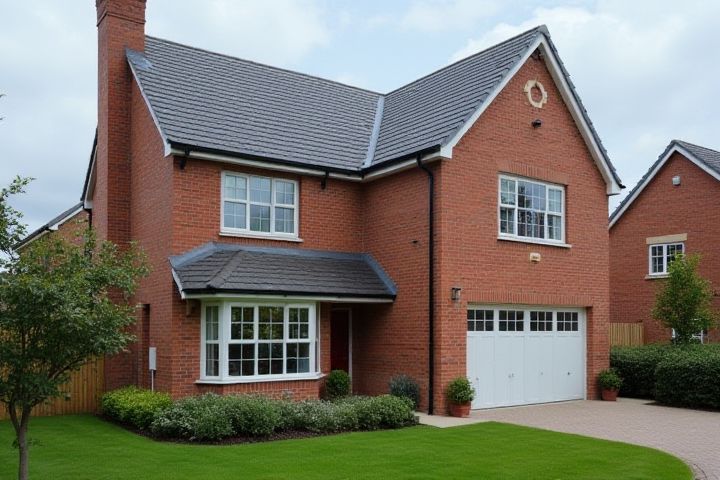
When selecting the best house style for you, consider your lifestyle, personal preferences, and the environment in which you live. Popular styles like contemporary, traditional, and modern offer unique aesthetic appeals and functionalities. A contemporary home typically features open floor plans, energy-efficient materials, and large windows that maximize natural light. Traditional styles, on the other hand, may incorporate classic elements like brick exteriors, gabled roofs, and detailed moldings that exude timeless charm. Understanding these styles can help you make an informed decision that complements your taste and enhances your living experience.
Which House Style Is Best For You
Budget constraints
When considering house styles within budget constraints, opt for designs that maximize space and minimize construction costs. Modest ranch or bungalow styles typically offer efficient floor plans, reducing the need for expensive structural elements. Additionally, traditional styles such as Cape Cod or Craftsman emphasize practicality while maintaining aesthetic appeal, allowing for cost-effective materials. Prioritize energy-efficient features in your selected style to enhance long-term savings and sustainability, ultimately benefiting your budget.
Family size and needs
Consider a single-story ranch-style house if your family consists of small children or elderly members, as it offers easy accessibility with minimal stairs. For medium to large families, a two-story home can provide ample space, often featuring four or more bedrooms and multiple bathrooms, ensuring comfort and privacy. If outdoor space is a priority, look for designs that incorporate large backyards or patios, suitable for family gatherings and play areas. Energy-efficient homes with sustainable features can save you up to 30% on utility bills, making them an economical choice for your budget over time.
Location and climate
Consider a modern, energy-efficient home design if you live in a hot climate, as it typically includes features like large overhangs and well-insulated walls to minimize heat absorption. Conversely, in cooler climates, a traditional, brick-built style may be preferable to provide necessary thermal mass and retain warmth, often benefiting from larger fireplaces and more compact layouts. If your location is prone to heavy rainfall, elevated houses or ones with sloped roofs can prevent water damage and flooding. Meanwhile, coastal areas benefit from stilted homes that can withstand storm surges and offer panoramic ocean views.
Personal lifestyle and hobbies
If your lifestyle emphasizes relaxation and creativity, a bohemian house style may be ideal, showcasing vibrant colors and eclectic furnishings. For those with active hobbies, such as fitness or outdoor activities, a minimalist design with open spaces can help maintain a clutter-free environment. If you enjoy social gatherings, a contemporary farmhouse style with large, welcoming spaces and rustic elements could enhance your entertaining experience. Consider how each style reflects your personality and hobbies to create a home that truly resonates with you.
Resale value potential
When considering resale value potential, contemporary and modern house styles often perform best in the market, attracting a wide range of buyers. A well-designed contemporary home typically features open floor plans, energy-efficient amenities, and high-quality materials, which can significantly increase its appeal and market value. Research indicates that homes built in this style can appreciate by as much as 10% more than traditional styles over a five-year period. Prioritizing curb appeal and maintaining a neutral palette can enhance your home's desirability, ensuring it stands out in the competitive real estate market.
Aesthetic preferences
A minimalist house style, characterized by clean lines and neutral color palettes, offers a tranquil aesthetic that encourages uncluttered living spaces. In contrast, a contemporary style often incorporates bold colors, innovative materials, and open floor plans, fostering a vibrant atmosphere perfect for social gatherings. If you appreciate natural elements, a Scandinavian design emphasizes simplicity, functionality, and the use of wood to create a cozy, inviting environment. Choosing the right style for you can significantly enhance your living experience, aligning your space with your personal aesthetic vision.
Maintenance requirements
When considering house styles, a ranch-style home stands out for its minimal maintenance requirements, featuring a single story and often fewer intricate architectural details. Craftsman-style homes, while aesthetically pleasing with their exposed beams and woodwork, may require more upkeep due to their distinctive features and outdoor elements. Mediterranean-style homes, characterized by stucco exteriors and tile roofs, offer durability but can demand regular maintenance to keep the roof and exterior in optimal condition. Your choice should reflect not only your aesthetic preferences but also the time and resources you are willing to invest in upkeep, with ranch homes generally leading in ease of maintenance.
Space configuration options
When considering house styles, prioritize configurations that enhance spatial efficiency and functionality. An open concept layout provides versatile space utilization, ideal for entertaining or family interactions, optimizing areas like living rooms and kitchens. In contrast, a traditional layout may include distinct rooms, offering privacy and a clear separation of activities, which can be beneficial for larger families. Your decision should reflect not only aesthetic preferences but also lifestyle needs and the flow of everyday activities within the space.
Construction materials and sustainability
Consider the modern sustainable house style, which primarily utilizes eco-friendly materials like bamboo, reclaimed wood, and recycled steel. Houses built with straw bales provide natural insulation, reducing energy costs by up to 50%. The integration of green roofs and solar panels can significantly decrease your carbon footprint, potentially generating up to 100% of your energy needs. Choosing a passive design approach optimizes natural light and ventilation, enhancing comfort while minimizing reliance on artificial heating and cooling systems.
Local zoning laws and regulations
Understanding local zoning laws and regulations is crucial when selecting the ideal house style for your property. Zoning classifications often dictate the types of structures allowed, influencing your options between single-family homes, multifamily units, or mixed-use buildings. For instance, if you're in a residential zone, styles like Cape Cod or Craftsman might be favored, whereas in a commercial zone, modern designs may be more accepted. You should verify the specific building codes in your area, as they can vary significantly, affecting everything from height restrictions to architectural aesthetics.
